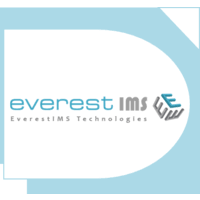The traditional IT management approach is growing extinct since siloed architectures are being replaced by integrated systems that operate in cloud-based environments. Hence, many industries are tapping into the power of AI to support and accelerate this digital business change. This evolution saw the emergence of AIOps – a platform-centric approach that helps organizations processes a tremendous amount of IT-related data from disparate sources.
Leveraging AI-driven Machine Learning, it can accurately and quickly transfer all the IT data that flows through the enterprise to a centralized and easily accessible repository.
Hence, AIOps technology transforms the raw data into actionable insights to help support teams stay on top of application challenges or other user concerns. Some of the most common use cases are:
- Detecting anomalies or deviations during the performance of IT applications and systems
- Future-proofing organizational readiness for outages
- Using alert attributes to create clusters of symptoms
- Improving the health of servers and systems
- Increasing the speed and efficiency of incident resolution
AIOps also equips multiple teams to harness a unified platform to proactively navigate past IT challenges. It also makes them more responsive to outages and slowdowns so that these can be prevented before any damage is done. AIOps also help organizations achieve operational excellence by ensuring that they can:
- Get end-to-end data access of connected IT systems – Maintain data integrity while collecting multiple types of data sets from any part of the technology ecosystem
- Automate data analysis and harness actionable insights – Apply ML-powered algorithms on vast volumes of data to trigger insights and take action
- Bring down downtime costs with predictive intelligence – Forecast the cause of downtime and be in a position to prevent and resolve issues before they happen.
- Do away with siloed responses – Unlock real data value by centralizing information and conducting swift root-cause analysis and remediation.
- Increase workforce performance – Incubate a collaborative culture by connecting multiple teams in real-time so that they can achieve positive business outcomes.
- Eliminate tedious yet critical manual tasks – Help employees add more strategic value to the organization by avoiding laborious processes that consume a lot of time and effort.
Let’s look at a few challenges that an organization may face, if it enters – unprepared – into the AIOps world.
- If the existing data quality is poor, to begin with, there’s little that AIOps can do
- Difficult to manage in-house AIOps operations since it requires heavy investments and tough-to-find resources
- Inability to align future growth plans with current implementation requirements – leading to an unfocussed automation approach
- Unforeseen bottlenecks may arise while reconfiguring traditional processes
In the early adoption stage of AIOps, organizations were mostly focused on automating routine and repetitive tasks. Over time AIOps has widened its scope to streamline and enhance complex IT processes through hyper-automation. However, it is pertinent to know that while AIOps is picking up the pace, it is not yet fully autonomous. It means that human expertise continues to play a crucial role in maximizing the ROI of AIOps. Unless one works with the right partner who has powerful domain and technology expertise, it would be difficult to unlock its true potential.


